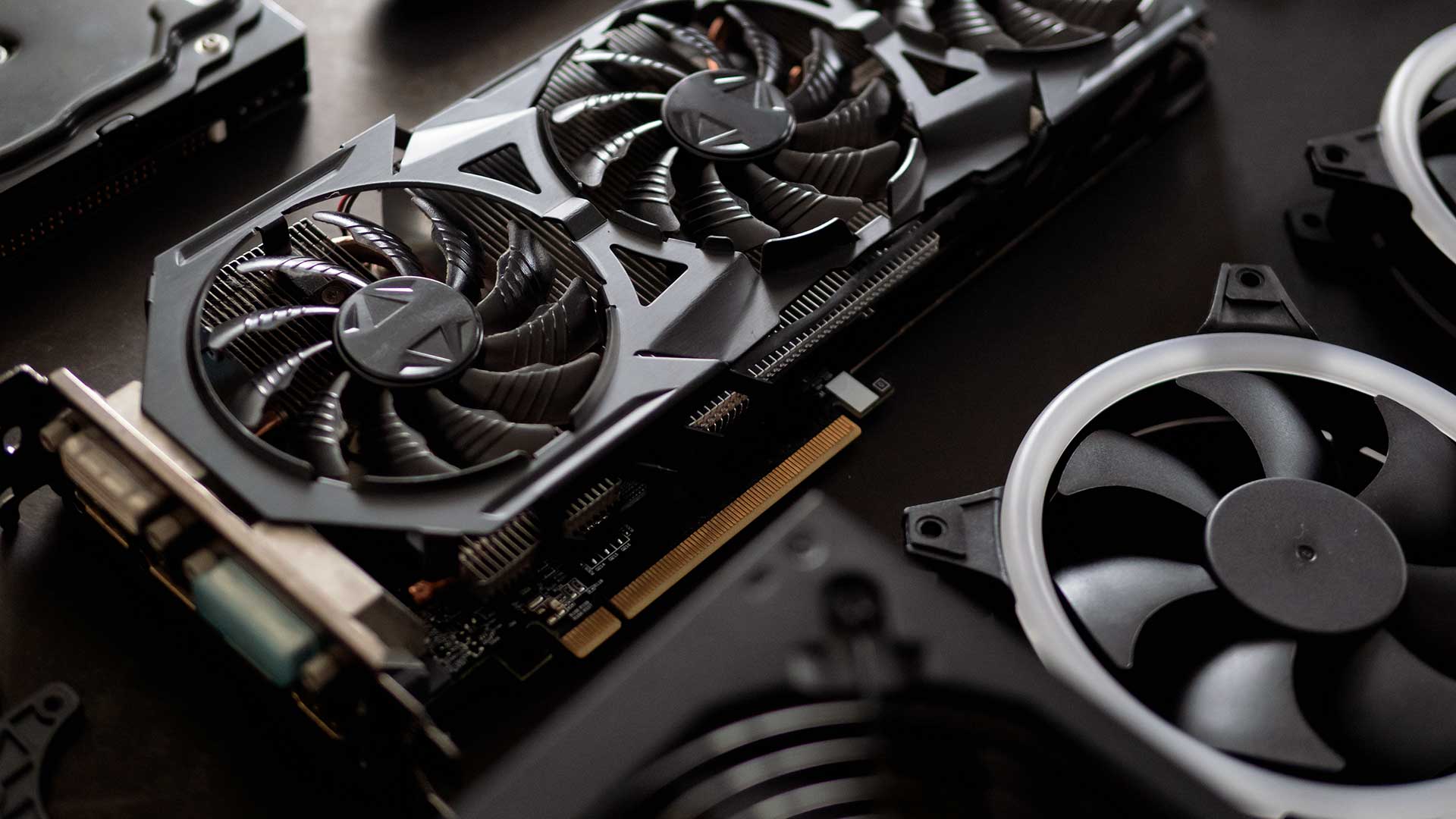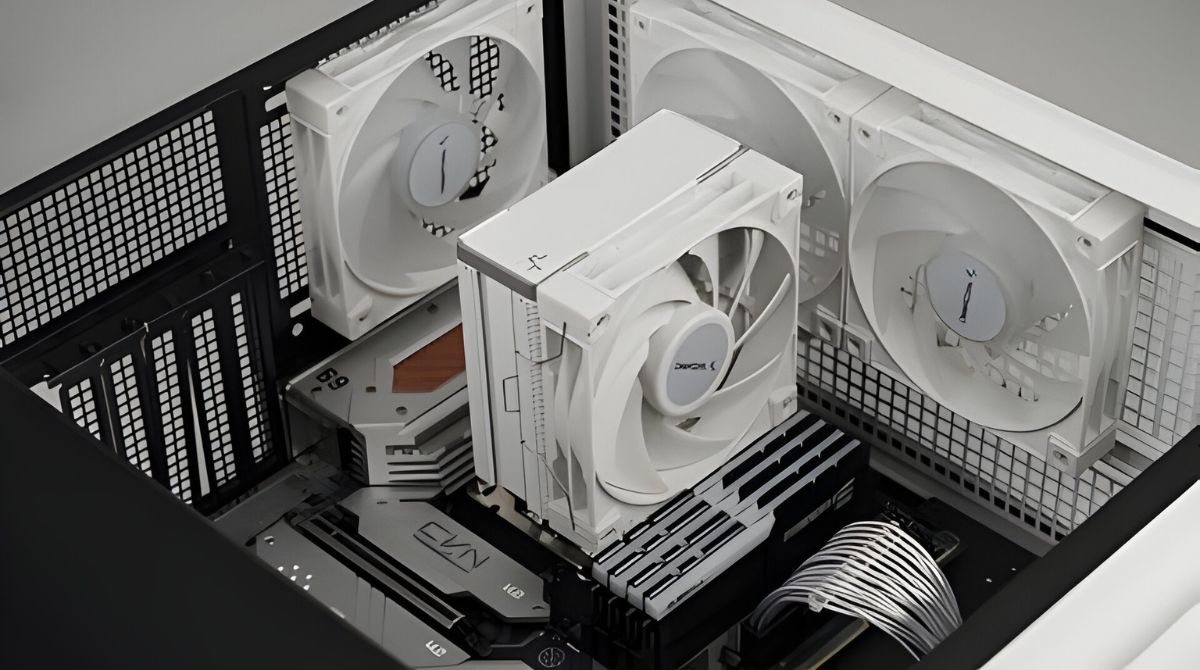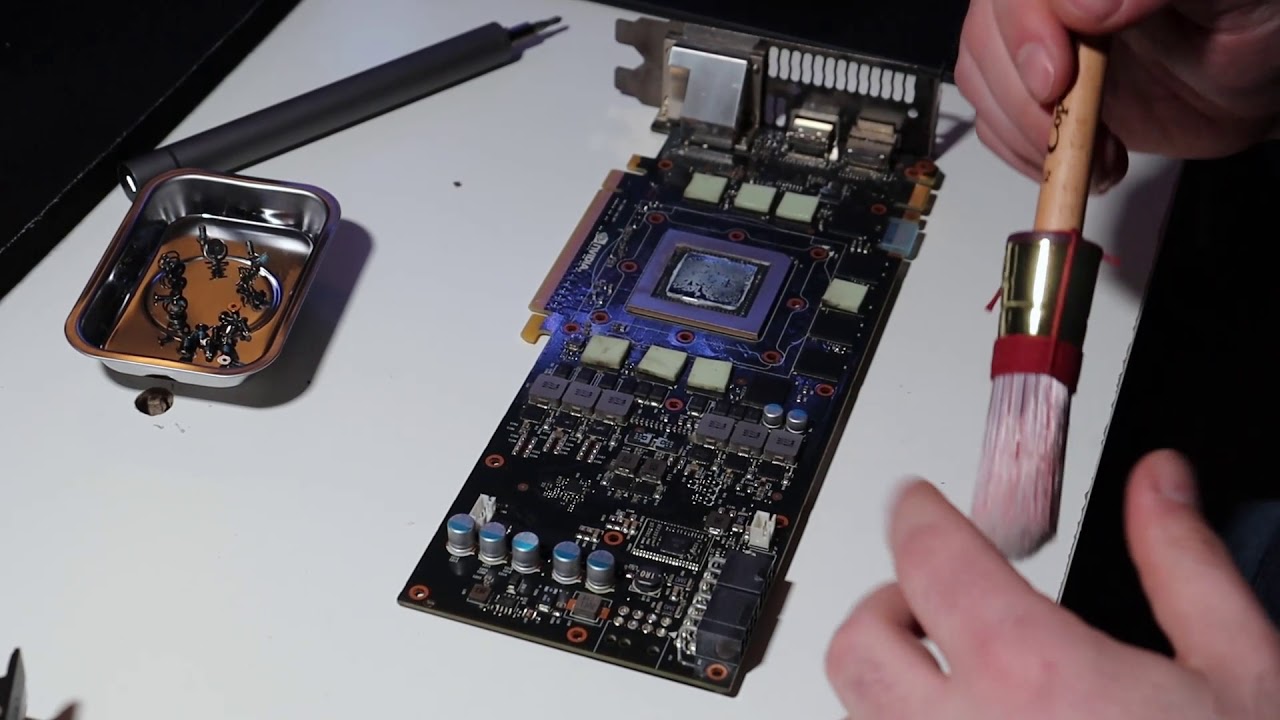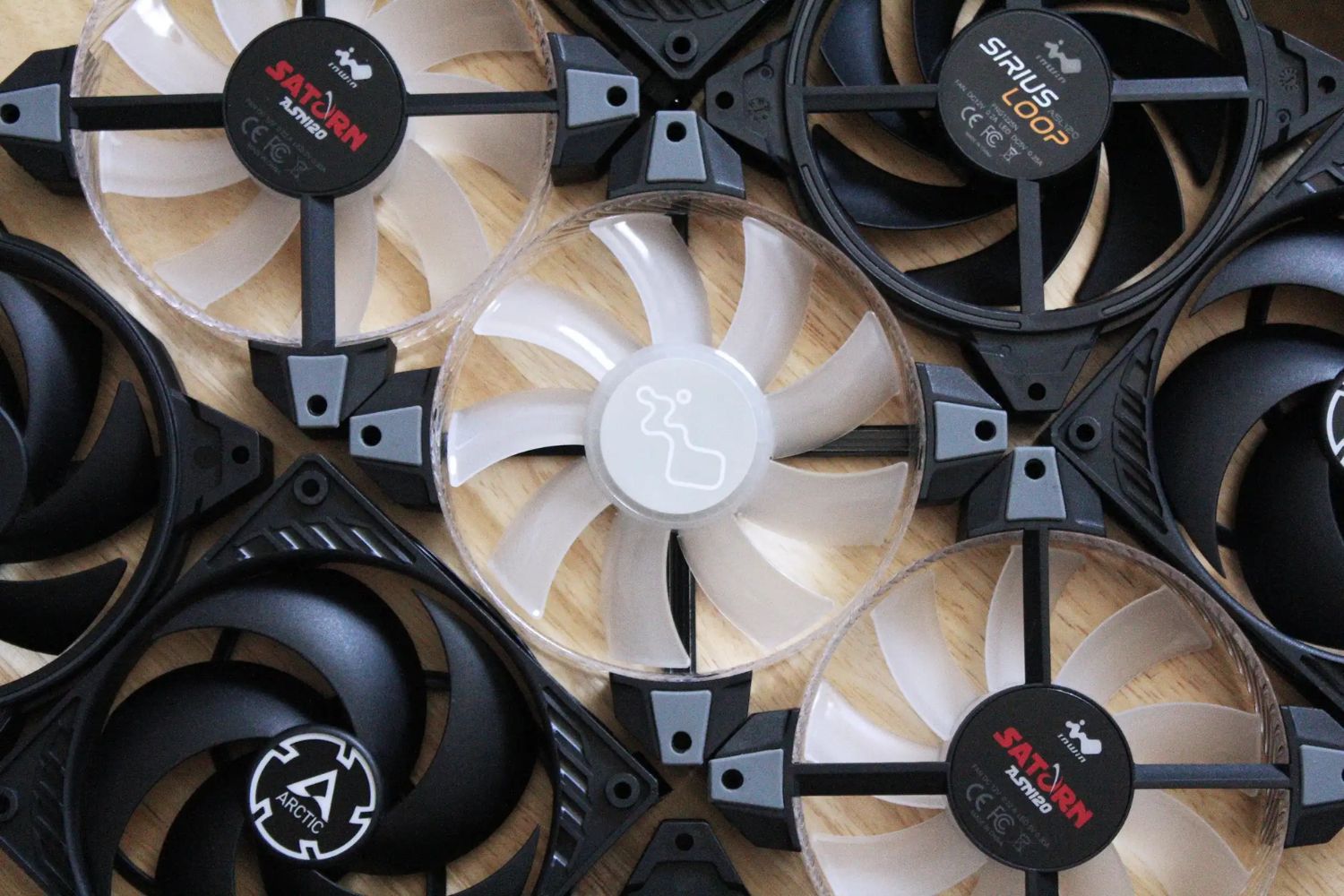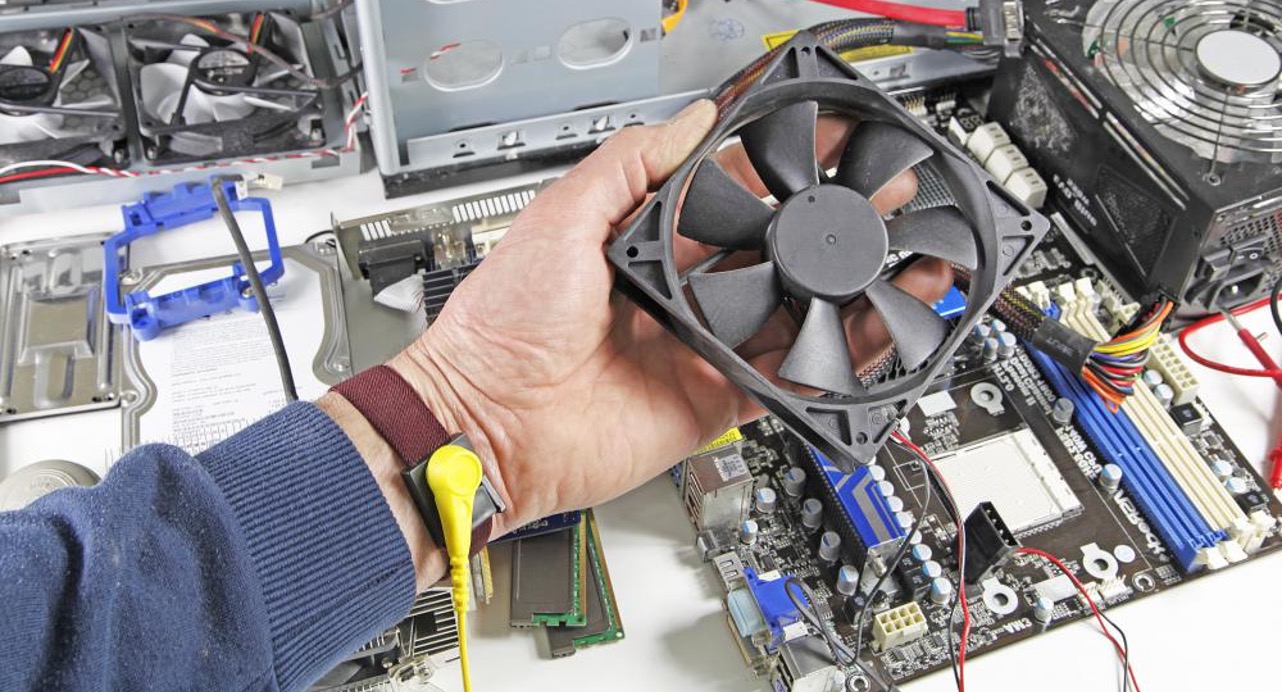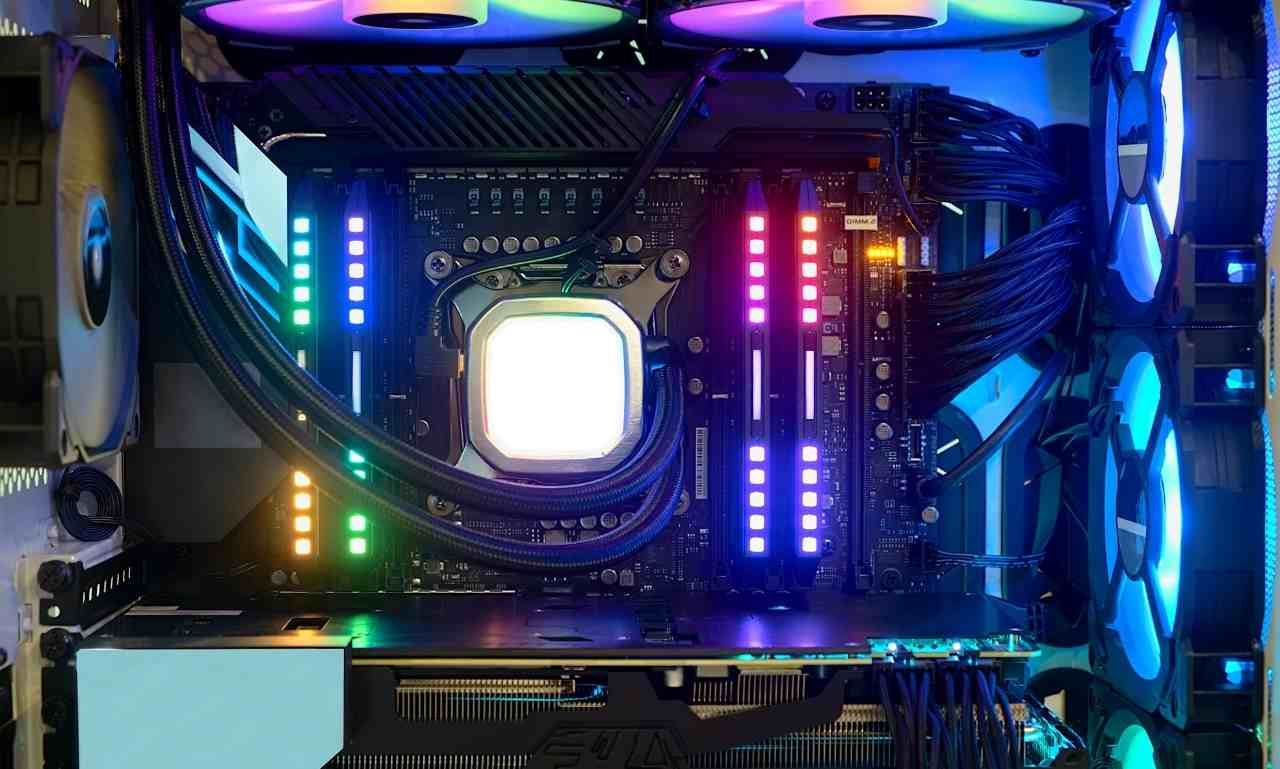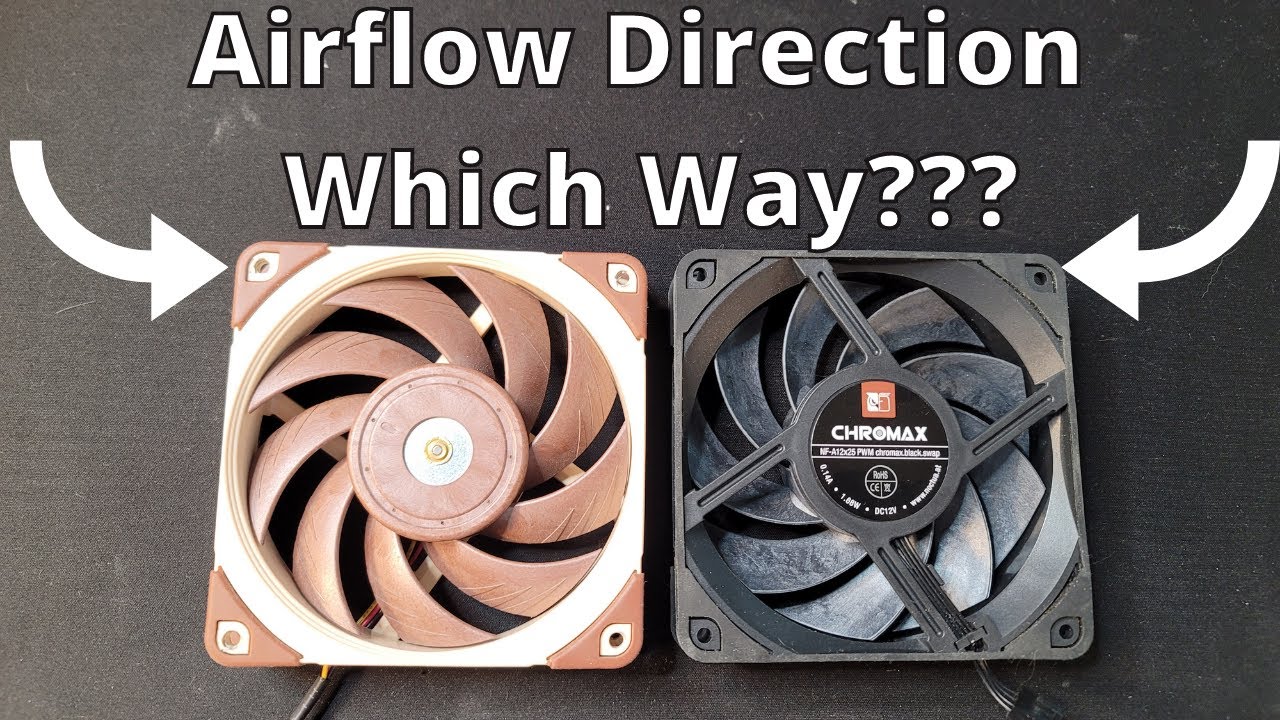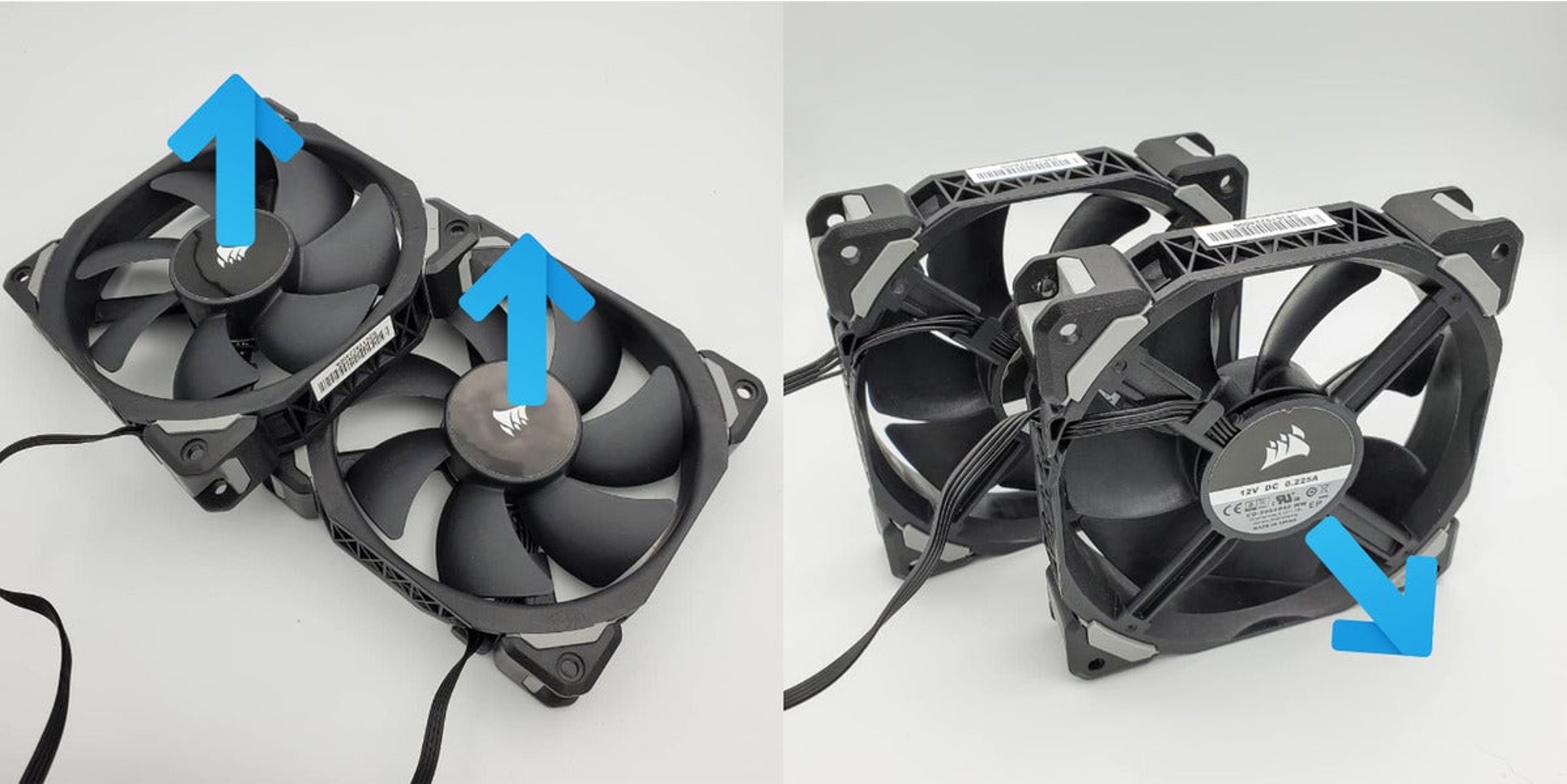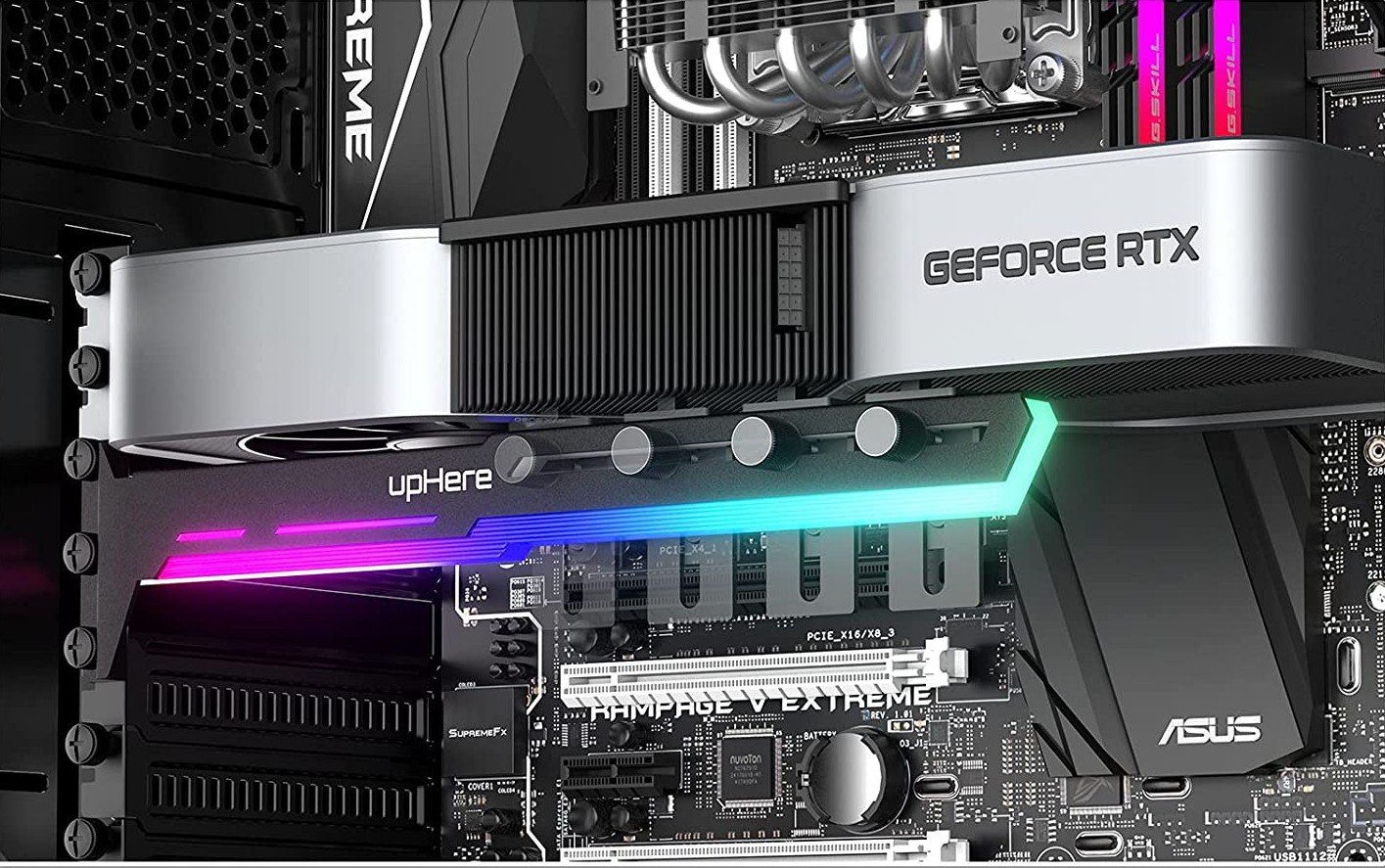Introduction
Graphics Processing Units (GPUs) are a crucial component in modern computer systems, responsible for handling complex graphical calculations and rendering stunning visuals in games, videos, and other graphic-intensive applications. However, GPUs generate a significant amount of heat during operation, which can negatively impact their performance and lifespan if not properly managed. This is where GPU fans come into play.
GPU fans serve the essential purpose of keeping the GPU cool by actively dissipating heat generated by the GPU’s processing operations. By maintaining optimal temperatures, GPU fans ensure stable performance, prevent overheating, and extend the lifespan of the graphics card. Understanding how GPU fans operate and the direction in which they blow is crucial for maintaining a well-functioning system and achieving optimal cooling efficiency.
In this article, we will explore the importance of GPU fans and delve into the two primary types of GPU fan designs: blower-style fans and axial-style fans. We will also discuss the factors to consider when choosing the right GPU fan for your needs. So, let’s dive in and learn more about how GPU fans work and the direction in which they blow.
Benefits of a GPU Fan
A dedicated GPU fan offers several benefits that are critical for the performance and longevity of your graphics card. Let’s explore some of the key advantages:
- Temperature Regulation: GPU fans play a vital role in regulating the temperature of the graphics card. When the GPU is under heavy load, it generates a significant amount of heat. The fan helps dissipate this heat by blowing cool air over the heatsink, preventing overheating and maintaining optimal operating temperatures.
- Improved Performance: Excessive heat can lead to thermal throttling, causing the GPU to reduce its performance in order to cool down. By keeping the GPU cool, the fan ensures that the graphics card can consistently operate at its full potential, delivering better performance in gaming, rendering, and other GPU-intensive tasks.
- Extended Lifespan: Overheating is a major cause of GPU failure. A GPU fan helps prolong the lifespan of your graphics card by preventing excessive heat buildup. By maintaining lower temperatures, the fan reduces the stress on the GPU’s components, such as the GPU chip and memory modules, improving their longevity.
- Noise Reduction: While GPU fans do generate some noise during operation, they also help to mitigate noise-related issues. By actively cooling the GPU, the fan prevents the GPU from reaching high temperatures that could trigger the graphics card’s fans to operate at full speed. This results in reduced overall system noise, creating a more pleasant and quieter computing experience.
- Compatibility: GPU fans are designed to be compatible with a wide range of graphics card models. Whether you have a high-end gaming GPU or a budget-friendly option, there are various aftermarket GPU fan options available that can be easily installed and provide efficient cooling for your specific graphics card model.
Overall, the benefits of a GPU fan cannot be overstated. From temperature regulation and improved performance to extending the lifespan of your graphics card, having an effective GPU fan is essential for any computer system that relies on a dedicated GPU for demanding tasks.
How GPU Fans Work
To understand how GPU fans work, it’s important to first grasp the basic principles of heat transfer and cooling. When the GPU is in operation, it generates heat as a byproduct of its computational processes. If left unchecked, this heat can accumulate and lead to performance issues or even hardware failure.
GPU fans work by actively cooling the graphics card, dissipating heat and maintaining optimal operating temperatures. Here is a simplified breakdown of how GPU fans operate:
- Airflow: GPU fans create airflow by spinning rapidly, drawing cool air from the surroundings and forcing it through the heatsink and over the GPU’s components. This airflow helps to carry away the heat generated by the GPU.
- Heatsink: The heat generated by the GPU is conducted away from the GPU chip and other components and transferred to a metal heatsink. The heatsink is designed with numerous fins or channels to increase the surface area, allowing for efficient heat dissipation.
- Thermal Interface Material (TIM): The GPU is physically attached to the heatsink using a thermal interface material. This material, such as thermal paste or thermal pads, ensures effective heat transfer between the GPU and the heatsink, maximizing cooling efficiency.
- Heat Dissipation: The airflow created by the GPU fans passes over the heatsink, absorbing the heat from the metal fins or channels. As the air circulates, it carries away the heat, cooling the heatsink and the GPU in the process.
- Exhaust: Once the air has absorbed the heat from the GPU, it is expelled out of the computer case through ventilation openings or exhaust fans. This process ensures that the hot air is removed from the system, maintaining a constant flow of cool air to the GPU.
The speed at which the GPU fans spin can be adjusted based on the GPU’s temperature. This is typically managed by the computer’s operating system or GPU control software, which monitors the GPU’s temperature and adjusts fan speed accordingly. By increasing or decreasing fan speed, system temperature can be regulated to maintain optimal performance and prevent overheating.
Overall, GPU fans play a crucial role in maintaining the stability and performance of the graphics card by effectively dissipating heat. By adhering to the principles of airflow, heatsinks, thermal interface materials, and exhaust, GPU fans ensure that your graphics card remains cool and operates at its best.
Direction of GPU Fans
Understanding the direction in which GPU fans blow is essential for effective cooling and proper airflow within a computer system. The direction of GPU fans can vary depending on the type and design of the graphics card. Let’s explore the two primary types of GPU fan designs and their corresponding directions:
- Blower-Style GPU Fans: Blower-style fans are commonly found in reference or stock graphics card designs. These fans feature a single fan that is positioned at the rear end of the graphics card, near the output ports. Blower-style fans are designed to intake cool air from inside the case and blow it across the heatsink towards the rear of the card. This hot air is then expelled out of the case through ventilation openings.
- Axial-Style GPU Fans: Axial-style fans, also known as open-air or dual-fan designs, are prevalent in aftermarket or custom graphics cards. These fans feature two or more fans positioned on top of the heatsink. In axial-style fans, one fan typically acts as an intake fan to draw cool air into the heatsink, while the other fan(s) exhaust hot air out through the rear of the graphics card. This design promotes better airflow and allows for more efficient cooling.
It’s important to note that the directional airflow of GPU fans is crucial for maintaining optimal cooling within a computer system. The direction of the fan determines how air circulates around the heatsink and the GPU’s components. By effectively expelling hot air and drawing in cool air, the fans ensure that the GPU remains within the desired temperature range.
Additionally, the direction of GPU fans can have implications for overall system cooling. In systems with multiple graphics cards, it’s crucial to ensure that the fans are aligned to promote proper airflow and avoid hot air recirculation. Strategic placement of the graphics cards and proper case ventilation can help optimize cooling efficiency.
When setting up or upgrading a computer system, it’s essential to consider the direction of the GPU fans, as different orientations and layouts may impact cooling performance. Manufacturers typically design graphics cards to blow air in a specific direction, so it’s advisable to ensure that the fans are correctly aligned with the system’s airflow and ventilation setup.
Overall, understanding the direction of GPU fans and their corresponding designs is crucial for maintaining efficient cooling performance. Whether you have a blower-style or axial-style fan, ensuring proper airflow and ventilation will help keep your graphics card cool, extending its lifespan and maximizing performance.
Blower-Style GPU Fans
Blower-style GPU fans are a common design found in reference or stock graphics cards. These fans are characterized by a single fan positioned at the rear end of the graphics card, near the output ports. Blower-style fans operate by intaking cool air from inside the computer case and blowing it across the heatsink towards the rear of the card. This hot air is then expelled out of the case through ventilation openings.
Blower-style GPU fans offer several advantages and considerations that are worth noting:
- Directing Hot Air Outside: Blower-style fans are designed to exhaust hot air directly out of the computer case. This can be beneficial in compact cases or systems with limited airflow, as it prevents hot air from recirculating around the graphics card and potentially impacting overall system temperature.
- GPU Cooling Efficiency: By directly blowing air across the heatsink and expelling it out of the case, blower-style fans can effectively cool the GPU. This can be advantageous in scenarios where maintaining lower GPU temperatures is critical, such as in overclocking or running demanding applications that generate a significant amount of heat.
- Noisy Operation: Blower-style fans, due to their design and positioning, can generate more noise compared to axial-style fans. This is primarily because the fan has to work harder to expel hot air out of the case through restricted ventilation openings. However, advancements in fan technology have led to improved noise levels in modern blower-style fans.
- Less Cooling for Other Components: In systems where multiple graphics cards or other components require active cooling, blower-style GPU fans may not be as effective. Since they primarily focus on expelling hot air out of the rear of the card, they provide less direct cooling for other nearby components like VRMs or memory modules.
- Compatibility with Restricted Cases: Blower-style fans are well-suited for cases with restricted airflow, as they do not rely heavily on a positive pressure setup. They can help effectively exhaust hot air even in cases with limited ventilation options, ensuring that cool air can still reach the card’s intake side.
When considering a graphics card with a blower-style fan, it’s important to assess your specific requirements and the system’s cooling needs. Blower-style fans excel in cases with limited airflow or in situations where GPU cooling is paramount. However, if noise levels or cooling efficiency for other components are significant factors, you may want to consider graphics cards with axial-style fans.
Overall, blower-style GPU fans offer an effective cooling solution, specifically in cases with restricted airflow or when cooling the GPU itself is the primary concern. Understanding the advantages and considerations of blower-style fans can help you make an informed decision when choosing a graphics card that suits your needs and system setup.
Axial-Style GPU Fans
Axial-style GPU fans, also known as open-air or dual-fan designs, are commonly found in aftermarket or custom graphics cards. These fans feature two or more fans positioned on top of the heatsink. In axial-style fans, one fan typically acts as an intake fan, drawing cool air into the heatsink, while the other fan(s) exhaust hot air out through the rear of the graphics card.
Axial-style GPU fans offer several advantages and considerations that set them apart from blower-style fans:
- Enhanced Cooling Efficiency: With separate intake and exhaust fans, axial-style fans provide better airflow and cooling efficiency compared to blower-style fans. The intake fan draws fresh cool air directly onto the heatsink, maximizing heat dissipation. The exhaust fan expels hot air out of the rear of the graphics card, ensuring that hot air does not recirculate within your computer case.
- Lower Noise Levels: Axial-style fans generally produce less noise compared to blower-style fans. The improved design and larger fan blades allow for better airflow with reduced RPMs, resulting in quieter operation. This can make a significant difference if you prioritize a quieter computing experience.
- Cooling Efficiency for Other Components: The enhanced airflow provided by axial-style fans not only benefits the GPU but also offers effective cooling for other nearby components, such as VRMs and memory modules. This can help maintain stable performance and extend the lifespan of these critical components in your system.
- Positive Pressure Setup: Axial-style GPU fans often work in tandem with other case fans to create a positive pressure setup. This means that the intake fans in the front of the case blow more air into the case than the exhaust fans remove. This approach helps prevent dust and debris from entering the case through unfiltered openings, ultimately reducing the need for frequent system cleanings.
- Easier Compatibility with Custom Cases: In custom cases or cases with ample airflow, axial-style GPU fans are generally more beneficial. Since they rely on a positive pressure setup and work alongside other case fans to optimize airflow, they can effectively cool the graphics card without the same constraints as blower-style fans.
When considering a graphics card with axial-style fans, it’s important to assess your specific requirements and the system’s cooling needs. Axial-style fans excel in providing increased cooling efficiency, lower noise levels, and improved cooling for other components. However, they may not be the ideal choice for cases with restricted airflow or situations where GPU cooling takes precedence over other factors.
Overall, axial-style GPU fans offer an excellent cooling solution, especially in cases with ample airflow or when cooling efficiency for both the GPU and surrounding components is essential. Understanding the advantages and considerations of axial-style fans can help you make an educated decision when selecting a graphics card that fits your needs and system setup.
Choosing the Right GPU Fan
When it comes to choosing the right GPU fan, there are several factors to consider. The following considerations can help you make an informed decision and select a GPU fan that meets your specific requirements:
- Cooling Performance: The primary function of a GPU fan is to keep the graphics card cool. Consider the cooling performance of the fan, including its efficiency, airflow, and heat dissipation capabilities. Look for fans with higher fan speeds or larger blade sizes, as they tend to provide better cooling performance.
- Noise Levels: Noise can be a significant concern, especially if you prefer a quieter computing experience. Look for GPU fans with lower noise levels, measured in decibels (dB). Fans with larger blades or designs that prioritize noise reduction can help minimize noise while still providing efficient cooling.
- Compatibility: Ensure that the GPU fan you choose is compatible with your specific graphics card model. Different graphics cards may have varying fan dimensions and mounting mechanisms. Check the manufacturer’s specifications or consult compatibility lists to ensure a proper fit.
- Form Factor and Size: Consider the size and form factor of the GPU fan in relation to your computer case. Ensure that the fan and heatsink combination will fit comfortably within the available space without obstructing other components or interfering with case airflow.
- Aftermarket Options: If you’re looking to replace the stock GPU fan that came with your graphics card, consider aftermarket options. Aftermarket GPU fans often provide improved cooling performance and lower noise levels compared to stock fans. Research reputable brands and read reviews to find a reliable and suitable option.
- Additional Features: Some GPU fans may offer additional features or customization options. This can include RGB lighting, fan control software, or the ability to adjust fan speeds based on GPU temperature. Consider these extra features if they align with your preferences or desired aesthetics.
It’s important to note that while the GPU fan is a crucial component in maintaining a cool graphics card, other factors such as case airflow, ventilation, and ambient room temperature also play a role in overall system cooling. Assessing and optimizing these factors alongside the GPU fan selection can contribute to better cooling performance and system stability.
Ultimately, the right GPU fan will depend on your specific needs, budget, and system configuration. Take the time to research and compare different options, considering the factors mentioned above. By selecting a GPU fan that offers efficient cooling, low noise levels, and compatibility with your graphics card, you can ensure optimal performance and longevity for your system.
Conclusion
GPU fans play a crucial role in maintaining the overall performance and longevity of your graphics card. Understanding the benefits and workings of GPU fans is essential for optimizing cooling efficiency in your computer system.
We explored the two primary types of GPU fan designs: blower-style fans and axial-style fans. Blower-style fans are commonly found in stock graphics cards, while axial-style fans are often seen in aftermarket or custom graphics cards. Blower-style fans excel in directing hot air outside the case and are suitable for cases with limited airflow. Axial-style fans offer enhanced cooling efficiency, lower noise levels, and improved cooling for other components.
When choosing the right GPU fan, consider factors such as cooling performance, noise levels, compatibility, form factor, and additional features. By selecting a GPU fan that meets your specific requirements, you can ensure optimal cooling performance for your graphics card.
It’s worth noting that GPU fans work alongside other cooling components in your system, such as case fans and proper case ventilation. Optimizing overall system cooling is essential for maintaining stable temperatures and maximizing performance.
Now that you understand the importance of GPU fans and their direction, you can make an informed decision when selecting the right GPU fan for your computer system. By maintaining optimal temperatures and efficient cooling, you can improve the lifespan and performance of your graphics card, ensuring smooth operation for all your gaming, rendering, and GPU-intensive tasks.







